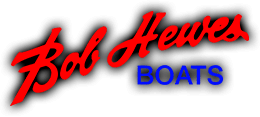The Problem with Aquatic Invasive Species
No doubt you’ve seen signs at docks directing you to avoid spreading aquatic invasive species (AIS). You may be wondering “why are aquatic invasive species a problem?” After all, lots of us remember a time when this didn’t seem to be a problem.
It’s a problem today because the scientific and environmental community has become much more aware of the issue, and because increasing global trade and movement of boats between water bodies have both contributed to increasing transportation of AIS.
Here’s some info on this very important topic from the team at Bob Hewes Boats. We know that you want to do the right thing and help preserve the health and vitality of our waterways, so please educate yourself about this issue and follow all local rules and regulations. If you have any questions or want to shop for boats or accessories, please come see us in North Miami and Pompano Beach, Florida.
What Are Aquatic Invasive Species?
AIS are living organisms within inland, estuarine, or marine waters that have spread to locations where they do not naturally occur. This can include plants, algae, fish, mollusks, and shellfish.
According to www.stopaquatichitchikers.org, “Other terms may be used to describe organisms living outside their native range, including nonindigenous, alien, exotic, non-native, nuisance, or hitchhiker.”
Why Are Aquatic Invasive Species a Problem?
When a non-native species colonizes a new area, a variety of problems can result, such as:
- Out-competing native populations
- Serving as a disease vector, thus harming human, animal, or plant populations
- Impairing the habitat and disrupting native populations
- Interbreeding with local populations
- Eating the eggs or young of local aquatic life or insects
- Clogging waterways
- Interfering with boat performance by attaching to boat hulls and the inside of boat motors
The interdependent nature of nature means that an invasive water plant can crowd out native vegetation and cause harm to migratory birds, which in turn interferes with waterfowl hunting. Often the species lacks local predators, so it’s able to take over, dominate, and soon overwhelm an ecosystem.
Ultimately, invasive species can cause a huge variety of negative effects, including jeopardizing biodiversity, interfering with ecosystems, choking irrigation canals, fouling public water supplies, degrading water quality, harming fisheries, and harming recreational opportunities. It’s a long and sobering list.
How Are Aquatic Invasive Species Spread?
Invasive species are often transported between different lakes and rivers by watercraft. Commercial ocean-going vessels can harbor critters in their ballast water, and personal boats can spread them via the hull or the motor. This often takes place during the larval stage of the organisms, so they might be too small to notice but they will mature and colonize a new body of water.
Other ways AIS are spread include releasing live bait or aquarium species, intentional release of species outside their native range, and illegal stocking.
The entire marine and boating community needs to unite and work to stop the spread of invasive species. Please follow all rules, regulations, and signage about AIS. The main message is Clean, Drain and Dry your vessel and your motor before moving it between water bodies.
For more information, please talk to the staff at Bob Hewes Boats. We serve boating enthusiasts in Miami, Pompano Beach, and Fort Lauderdale, Florida.

